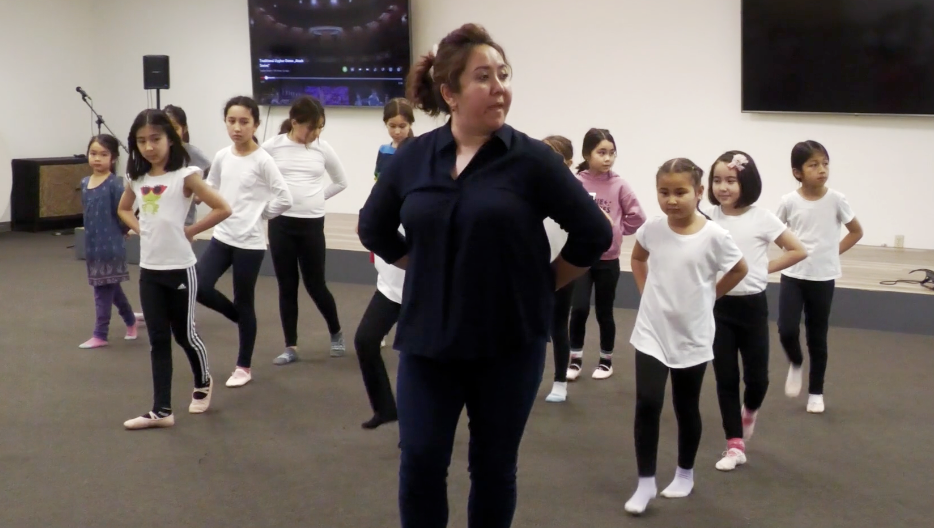WASHINGTON – When Irade Kashgary was a little girl, she fled East Turkestan with her parents out of fear they would disappear at the hands of the Chinese Communist Party like others in their town. Since leaving in 1999, they’ve never returned to their homeland.
East Turkestan, also called Xinjiang by the CCP, is home to the Uyghur people, a predominantly Muslim Turkic ethnic group. The Uyghurs have faced persecution for decades, but since Xi Jinping took power in 2013, the CCP’s oppression of the Uyghur people has heightened. Over the past few years, the CCP has forced the population to work in poor labor conditions, detained Uyghurs in internment camps, forcibly sterilized Uyghur women and attempted to destroy the culture.
The Kashgary family’s heritage put them at risk in East Turkestan. They eventually settled in Fairfax, Virginia, home to the largest population of Uyghurs in the U.S.
(Produced by Lance Wilhelm and Lily Ogburn/MNS)
Uyghur advocacy in D.C. and Northern Virginia
Many Uyghurs left East Turkestan when the CCP intensified its persecution after the Ghulja Massacre in 1997, a major Uyghur protest of the CCP’s control of East Turkestan. When these Uyghurs came to the U.S., they wanted to advocate for their loved ones and their nation, prompting them to settle near Washington, D.C. Since then, the community has continued to grow.
Through this activism, Uyghur issues have recently gained traction in Congress. The Uyghur Policy Act, which seeks to better use U.S. resources and agencies to preserve Uyghur culture and pressure the Chinese government to end the CCP’s persecution, passed on Feb. 15 with overwhelming support in the House of Representatives.
For Kashgary, it is crucial that legislation like the Uyghur Policy Act passes while Uyghur issues are in the spotlight.
“We don’t know how the political spectrum is going to look like in the next like 10 years,” Kashgary said. “So if we get these legislations passed while this issue is being really highlighted and focused on then we can make a more permanent impact.”
Despite the support for Uyghurs in Congress, seeking asylum is a difficult task for many Uyghurs. Kashgary said it’s important for lawmakers to support a faster asylum process for Uyghurs who can escape the CCP.
“With policies that support easier access to asylum, with special asylum cases for Uyghurs, it would make it more probable for us to come to the United States to seek some sort of safety,” Kashgary said.
Ana Care & Education Uyghur School
After living in Northern Virginia for years, Irade and her mother, Sureyya Kashgary, noticed a void in the community: there was no consistent place for Uyghur children to learn their native language and practice their culture.
“My younger brother was reaching the age of four or five where he should be starting to learn Uyghur, and we decided that we should do something about it,” Kashgary said.
In 2017, Irade and Sureyya founded the Ana Care & Education Uyghur School, aimed at preserving Uyghur culture and building the community in Fairfax.
Students of all ages spend hours learning Uyghur language, history and dance at the school every Sunday. Whether students are learning Islamic etiquette, practicing traditional Uyghur dance or playing the dutar instrument, they are embracing their heritage at Ana Care.
Elfidar Iltebir, president of the Uyghur American Association and an Ana Care parent, said the school provides children with friendships and a sense of belonging.
“Besides the knowledge that they get, it’s the environment they like. Honestly, my kid says, ‘I wish we come to Uyghur school every day and go to American school on the weekends,’” Iltebir said.
The school also teaches the children to understand the importance of preserving their heritage in a time of cultural erasure.
For Ayruz Abdulghani, an Ana Care student, practicing her language and traditions at the school is crucial for the future of her Uyghur culture.
“With these skills we can teach our kids, and then our kids can teach their kids, so like [we’re] never dying out,” she said.
Roshan Hamit Millage, a teacher at Ana Care, has been at the school for over five years. Millage started teaching in 1993, serving as a middle school teacher in Urumchi, East Turkestan.
Millage said she sees her own childhood in many of the children at Ana Care. She said she wants her students to be able to pass on the language, so it’s her responsibility to teach them.
“I feel like they’re all my children,” Millage said. “They love me, I love them.”
Since the school’s founding, it has grown to include extracurricular programs and more students. According to Kashgary, the school serves over 100 students on any given Sunday.
Kashgary said the success of the school proves the strength and resilience of the Uyghur people.
“We’re building schools, we’re building communities, we’re building businesses,” she said.
“We just didn’t have that opportunity back home because of the oppression for years and years and years, and I think that’s what we’re here proving, is that we are capable. We are not just victims, but we’re survivors.”
While there is more work to be done to end the Uyghur genocide and provide safety for Uyghurs in America, community centers like Ana Care are preserving the culture while building a home for the growing population.
Kashgary said she struggled with her identity growing up as an Uyghur American, never feeling like she fully belonged in America and unable to visit her homeland. She hopes that Ana Care can provide Uyghur children with the sense of comfort and belonging she wished she had as a young girl.
“When I see these kids running [around], I feel like this is the one time that they truly feel very full of themselves, and very full in their identity,” Kashgary said. “It’s a lot of hope and beauty in between the midst of pain and sadness.”


